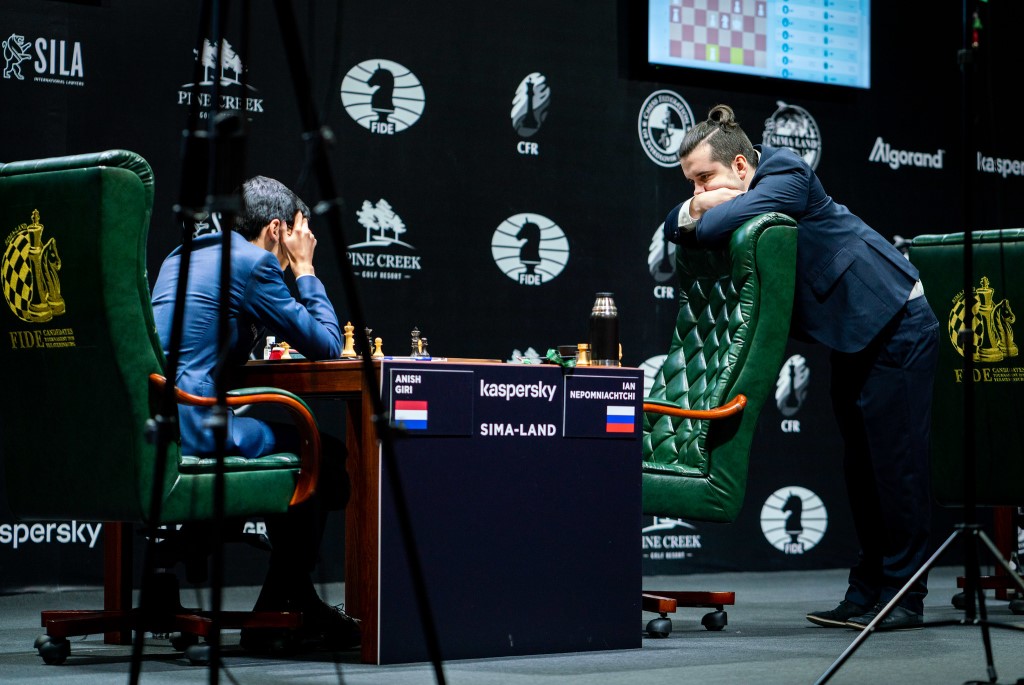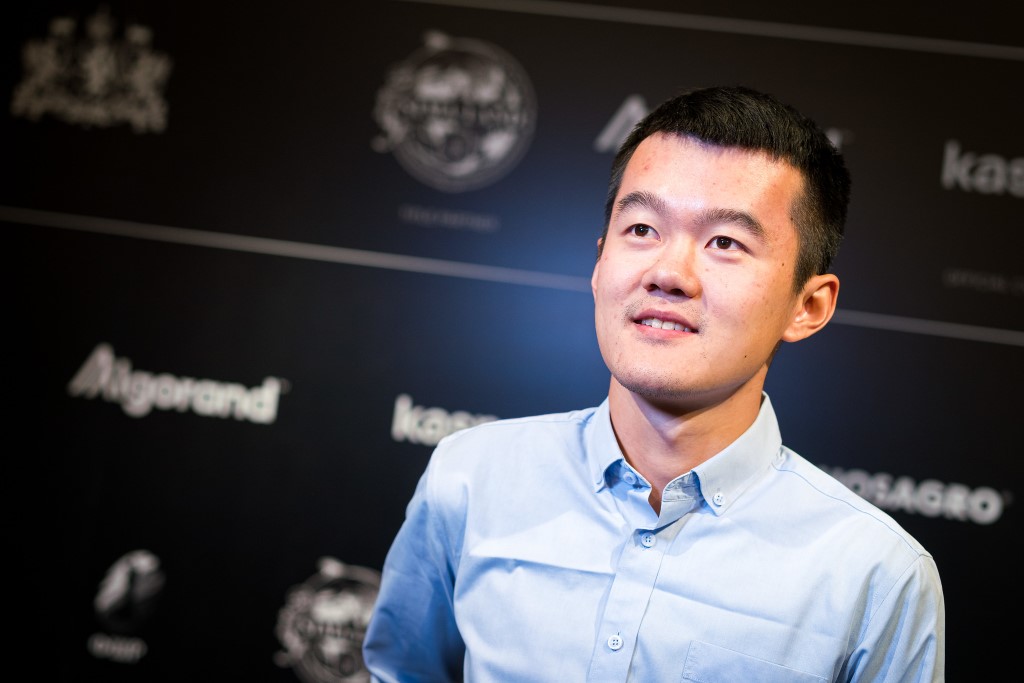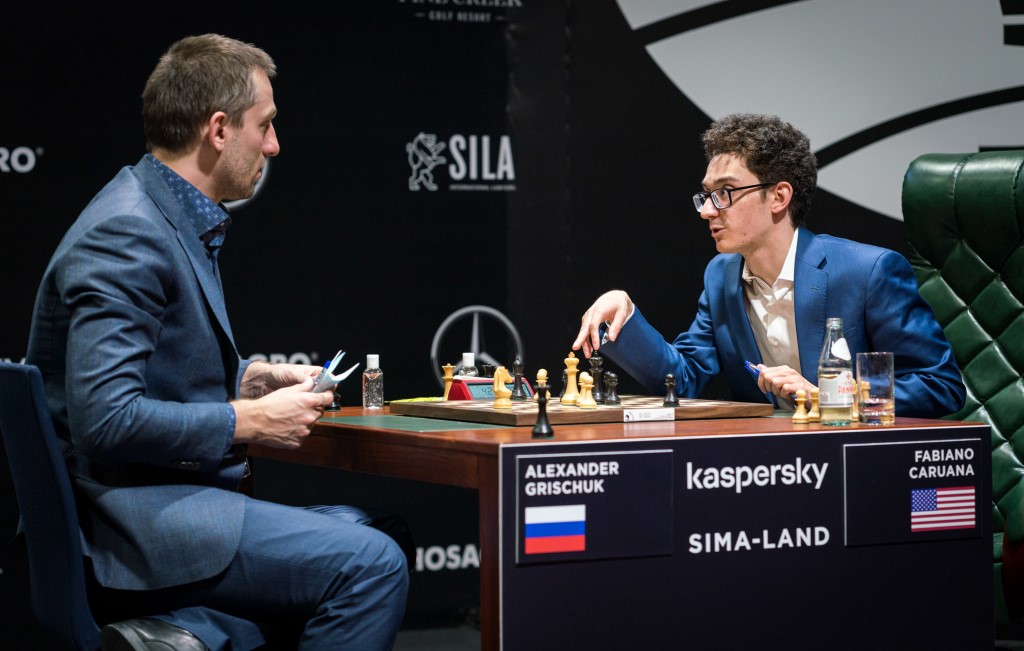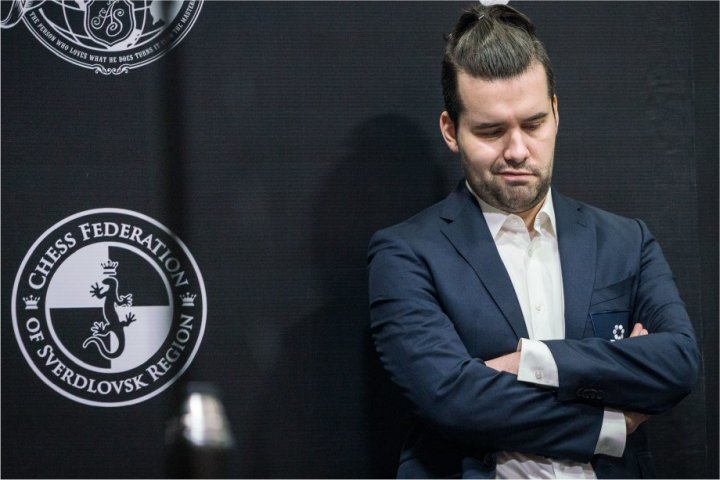Opening Developments in Yekaterinburg
One of the most interesting aspects of a tournament at the highest level is the plethora of new and creative opening ideas displayed by each player. Each of the eight candidates spent months preparing their repertoires and created specific ideas for one another, while not being afraid to show their best analytical work.
The first part of my reflection focusses on opening ideas from the first half of the tournament (Rounds 1-7), especially ones by Giri and Caruana because these two unleashed several remarkable ideas in their games. These ideas have contributed significantly to the development of theory in the Catalan, Classical Slav, and 6…Bc5 Ruy Lopez in particular. As we will see in our analysis of the games below, some of these ideas are strong enough to completely overwrite past conclusions from opening theory.
Lighting up the Symmetrical English
Right from the start of the tournament against Nepomniachtchi, Giri made it clear how much effort had been invested into his Candidates preparation. His concept began with a new idea on move 12 and the ensuing complications were filled with double-edged positions and exchange sacrifices. Nepomniachtchi demonstrated great resilience by heading straight for the critical line of Giri’s preparation and then successfully calculated his way out of danger. Suddenly the initiative passed to Nepomniachtchi, who eventually won a difficult endgame which was on the verge of becoming a fortress.

Anish Giri vs Ian Nepomniachtchi, Round 3 | Photo: Lennart Ootes
Caruana’s Double Pawn Sacrifice
Caruana’s repertoire with the Black pieces (Classical Slav and 6…Bc5 against the Ruy Lopez) would have been very difficult to predict before the tournament began. In his Round 3 game against Ding Liren, Caruana not only surprised his opponent by playing the Classical Slav, but also unleashed a shocking novelty on move 9 based on a double pawn sacrifice. Similarly to the game between Giri and Nepomniachtchi, Ding responded by heading for one of the most critical lines in Caruana’s preparation and successfully calculated his way out of danger. Unfortunately for Caruana, he mixed up the move order in his preparation and ended up with insufficient compensation for the two pawns after Ding found a way to consolidate.
The result doesn’t diminish the impact of Caruana’s new idea, and I am especially interested in seeing how the theory develops in this line after 10.e4, where the resulting positions are extremely messy and full of sharp ideas.

Ding Liren | Photo: Lennart Ootes
Giri’s …h5-h4 in the Catalan
The Catalan is a staple in the repertoire of many elite players, especially Ding Liren, who plays closed openings almost exclusively with the White pieces. Facing Ding Liren’s Catalan in Round 4, Giri employed a rare system with 4…a5!? and reached a position that looks favourable for White because of Black’s hanging pawns. However, Giri had prepared some very deep ideas involving …h5-h4 which not only make this system fully playable, but also give Black excellent chances to fight for the initiative in some lines (see Vidit – Giri in the annotations below).
Considering that Giri had enough confidence in the 4…a5 system to employ it against one of the world’s leading experts on the Catalan, I would not be surprised if it eventually becomes as mainstream as some of the other, more established ways of meeting the Catalan.

Anish Giri fighting the Catalan | Photo: Lennart Ootes
AlphaZero-Inspired Play Against the Grunfeld
I should mention that each of the ideas discussed in this article were certainly analyzed extensively by the players and their neural network engines (Leela Chess Zero and recent versions of Stockfish, among others). However, this game in particular contains clear parallels to AlphaZero’s famous h-pawn advance in the Grunfeld. Caruana plays the Classical Exchange Variation with 7.Bc4 against Nepomniachtchi’s Grunfeld and goes for a modern idea involving h4-h5 to put pressure on Black’s kingside dark squares. Nepomniachtchi reacts well and finds a way to simplify the game, leading to a slightly worse endgame which he holds comfortably.
New Ideas in the 6…Bc5 Ruy Lopez
Caruana defended one of the most critical lines (10.a5) in the 6…Bc5 Ruy Lopez twice in the first half of the Candidates. In both games, Caruana showed deep knowledge of the arising positions and had several new ideas in store. Especially in the game we are about to examine, Caruana’s 12th move likely came as a complete shock to Grischuk because this move was previously thought to be tactically flawed. In fact, exploiting the “tactical flaw” could easily backfire on White as Black seizes a powerful initiative and obtains dangerous kingside attacking chances (see the note to White’s 13th move).

Alexander Grischuk and Fabiano Caruana analyse their game | Photo: Lennart Ootes
Nepomniachtchi’s French Defence
We have already discussed some surprising changes in Caruana’s Black repertoire for the Candidates, but arguably the most shocking repertoire change in the event was Nepomniachtchi’s decision to deviate from his usual Najdorf and play the Winawer French in Rounds 3 and 7. In an extremely important Round 7 matchup between MVL (3.5/6 points) and Nepomniachtchi (4.5/6 points), MVL went for a relatively new and critical setup against the Winawer and obtained a very comfortable position immediately out of the opening.
This was the only game in the Candidates where Nepomniachtchi’s calculation abilities and resilience in defence were not enough to survive against deep, targeted preparation and strong middlegame play by his opponent.

The eventual tournament winner Ian Nepomniachtchi | Photo: Lennart Ootes
Pros and Cons of Deep Preparation
One of the key themes seen throughout this article was the use of deep, original preparation. Perhaps the most attractive reason to employ such preparation is that the opponent will be forced to think over the board while the prepared player can rely on remembering and understanding their home analysis. This leads to an advantage on the clock as well as a psychological advantage because the player on the receiving end of the preparation may be concerned with traps set by the opponent. For example, Grischuk remarked after his game with Caruana that it was very unpleasant to play half of the game against a computer (i.e., Caruana’s preparation).
It may be the case that certain players react better to their opponent’s deep preparation. In the first two games of the article, we saw how Nepomniachtchi and Ding Liren both managed to calculate their way out of opening problems, seize the initiative, and eventually take the full point over Giri and Caruana respectively. Especially in the case of Nepomniachtchi, who usually employs a double-edged and narrow repertoire with the Black pieces (Grunfeld and Winawer or Najdorf), this ability to calmly calculate when faced with the opponent’s deep preparation is extremely important.
As a further warning of relying heavily on deep preparation, we saw in the Ding Liren – Caruana game that it is impossible to memorize every detail (17…Ng6 instead of 17…Rc8!) and that the engine can sometimes provide a false sense of knowledge and security. In reality, the position may be just as dangerous (or even more so) for the side employing the preparation, but this is only realized over the board.
Clearly deep preparation will remain an important component of top-level chess, but I think that it is useful for players of all strengths to recognize its limitations and understand the risks involved for both sides, so they can be addressed and diminished before it is too late during a game.
The first game in my second article will be another piece of deep preparation by Caruana, which eventually brings him a very important victory.
The second part of this 2020-2021 Candidates reflection will focus on opening ideas from the second half of the tournament (Rounds 8-14).
Links




























